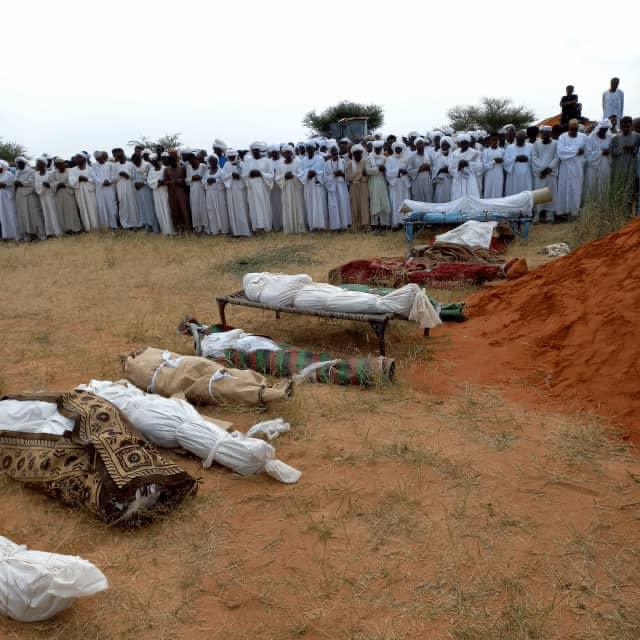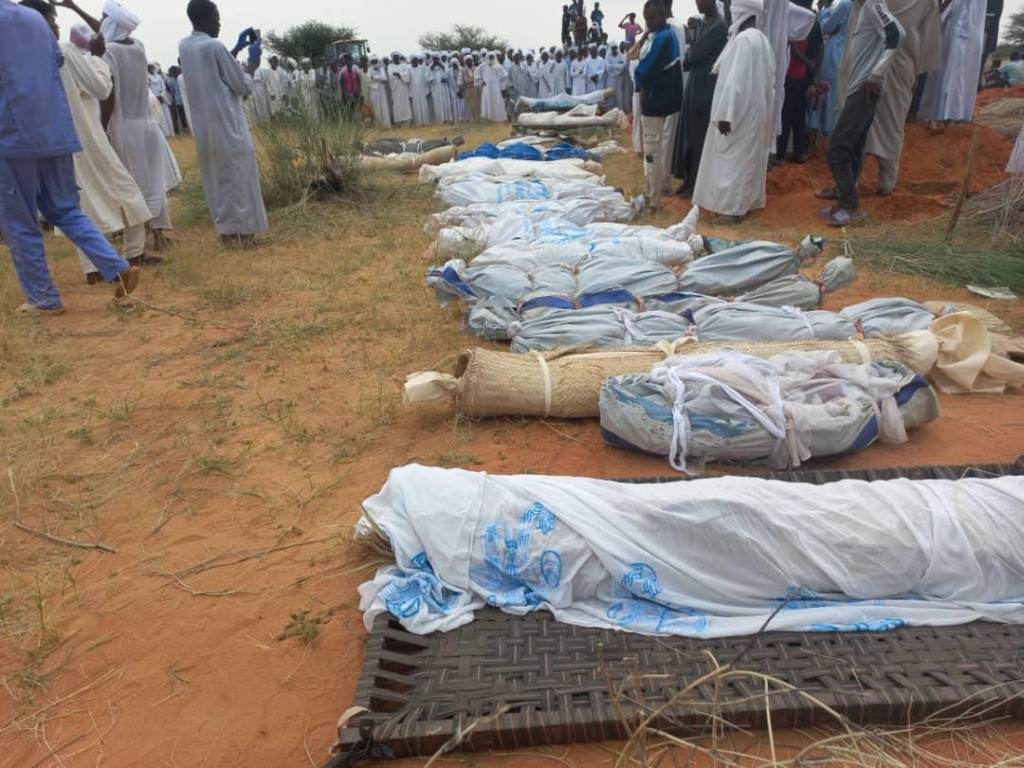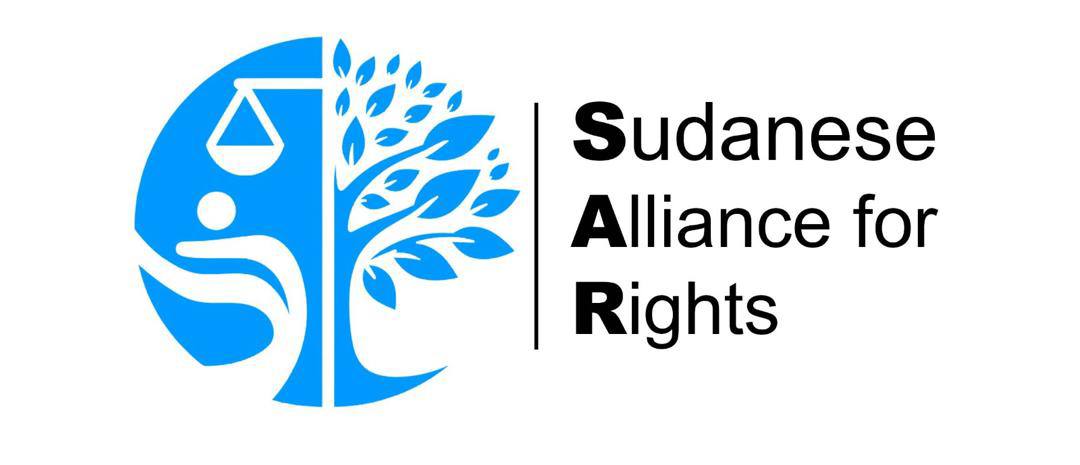Executive Summary
This report examines the devastating impact of the ongoing war in Sudan, focusing on the aerial bombardment of Al-Kuma, a city in North Darfur. The conflict, which erupted on 15 April 2023 between the Sudanese Armed Forces (SAF) and the Rapid Support Forces (RSF), has led to widespread destruction, with over 61,000 casualties and a humanitarian crisis affecting more than 14 million displaced people.
Al-Kuma, strategically located as a crossroads connecting Sudan’s east and west, has become a refuge for over 400,000 displaced individuals, primarily women, children, and the elderly. Despite not having military bases, the city has suffered 72 aerial strikes from Sudanese warplanes, resulting in 198 civilian deaths, with children being the most affected. These strikes have targeted homes, markets, hospitals, schools, and water sources, exacerbating an already dire humanitarian situation.
The attacks have left Al-Kuma with severe shortages in basic needs, including water, shelter, and medical supplies. The destruction of livestock, critical to the local economy, has further worsened the crisis. The Sudanese Air Force’s actions violate international humanitarian law, including the Geneva Conventions, as they involve attacks on civilian populations, medical units, and essential infrastructure without military justification.
The report calls for urgent international intervention, including the imposition of a no-fly zone and the activation of resolutions focused on civilian protection. Holding perpetrators accountable is essential to mitigate further harm and restore peace in Sudan.
Introduction
The war in Sudan, which began on 15 April 2023 between the Sudanese Armed Forces (SAF) and the Rapid Support Forces (RSF), is now four months shy of entering its second year, with no end in sight and an alarming deterioration of the humanitarian situation. The conflict has resulted in over 61,000 deaths, including both military personnel and civilians, and thousands more injured or missing.
The United Nations (UN) has warned that Sudan is facing the world’s worst displacement crisis, as the war continues to devastate communities across the country. Approximately 30% of Sudan’s population of 48 million—equivalent to over 14 million people—have been forced to flee their homes since the conflict began.
Of these, at least 11 million people remain displaced within Sudan, according to the latest figures from the International Organization for Migration (IOM). Additionally, over 25 million people face the specter of hunger, as food supplies dwindle and humanitarian aid remains severely restricted.
The prolonged armed conflict between the two warring factions in Sudan has deeply affected many cities, with Al-Kuma standing out as one of the most severely impacted. The Sudanese army air force has made it a frequent target, regularly dropping explosive barrels, causing significant casualties, including dozens of deaths and hundreds of injuries. Many of the victims are women, children, and the elderly, adding to the humanitarian toll. In addition to the human suffering, civilian infrastructure has also been heavily damaged, with homes, health facilities, schools, shelters, markets, water sources, and mosques all bearing the brunt of the Sudanese army’s raids.
Background
Al-Kuma is a city in North Darfur State, located about 76 km east of El Fasher, the state’s capital. The city lies on the national road connecting the Darfur region to the capital, Khartoum. Al-Kuma is a locality with four administrative units: Al-Kuma, Sari Um Heglig, Al-Kabeer, and Ghibaish. Its strategic location makes it an important crossroads linking the western and eastern parts of Sudan, as well as connecting the cities of Nyala, El Geniena, and Zalingei. The majority of Al-Kuma’s residents descend from Arab pastoralist origins.
Since the eruption of the armed conflict, Al-Kuma has become a safe haven for many displaced people fleeing the clashes, primarily from Khartoum, Nyala, El Fasher, and Umm Kaddada. Over 400,000 displaced persons (more than 50,000 families), most of whom are women, children, and the elderly, are now residing in 23 shelters across the city, according to local observers.
Although Al-Kuma has not witnessed direct confrontations between the two warring parties, as it does not host any military bases for either of them, it has still been subjected to aerial bombardments as part of the broader conflict strategy. These attacks underscore the indiscriminate nature of the violence, with civilians bearing the brunt of the impact. The airstrikes, targeting areas with no military significance, aim to disrupt the civilian population and intimidate those seeking refuge, exacerbating the already dire humanitarian crisis.
Additionally, the influx of a large displaced population, including women, children, and the elderly, has shifted Al-Kuma’s demographics. The city, once a predominantly agricultural and pastoralist community, has transformed into a critical site for humanitarian relief. This demographic change highlights the vulnerability of Al-Kuma, as it finds itself caught between its historical identity and the overwhelming needs of the displaced people it now hosts.
As the conflict persists, Al-Kuma faces significant risks—not only from the airstrikes and violence but also from the ongoing strain on its social, economic, and infrastructural capacities. The city’s struggle for survival amid this overwhelming crisis reflects the broader challenges faced by many communities across Sudan, where the impact of the conflict is most acutely felt by those with few means of protection
Al-Kuma – Caught in the line of fire.
This report monitors the aerial strikes on Al-Kuma city by the Sudanese army warplanes from April 15, 2023, to December 10, 2024.
The city and its various neighborhoods were targeted by systematic bombardment on markets and healthcare facilities, rendering them out of service. The destruction of water supplies left thousands of residents grappling with a severe water shortage. Additionally, livestock, a key economic resource for the area’s residents, was also targeted, leading to the death of thousands of cattle, camels, and goats.
A total of 72 airstrikes have hit Al-Kuma city since the beginning of the conflict, targeting various neighborhoods. These strikes mainly targeted citizens’ homes and gathering places. Even places of worship, such as mosques and Khalwas (Quranic schools), were not spared. There was also systematic targeting of hospitals, medical centers, and other medical service provision sites in Al-Kuma. All of this appears to be an attempt by the army to punish the presumed social bases of the Rapid Support Forces, in response to calls from the army’s civilian and military supporters and allies.


The strikes on Al-Kuma further left 298 women, men, and children injured, according to estimates. Nearly 17 of the victims endured amputations due to the severity of their injuries, shortages in medical supplies and medicines, and a lack of qualified medical personnel.
The damage from the airstrikes on Al-Kuma was not confined to the civilian population but extended to civilian objects and means of living. A total of 158 homes were destroyed, either partially or completely, in addition to three hospitals and many health centers. Additionally, 4 schools, 4 mosques, and one Khalwa were destroyed.
The raids also destroyed 253 markets and shops and killed 693 heads of camels, cows, and goats.
This targeting undermines the primary source of livelihood for the residents of Al-Kuma, who mainly depend on animal husbandry, a crucial aspect of their survival. Additionally, even agricultural activities have been subjected to systematic and deliberate destruction.
Impact of the Aerial Strikes on Al-Kuma
The Sudanese army warplanes’ aerial strikes on Al-Kuma have sparked panic among residents, forcing many to flee to the surrounding areas. Those who remain in the city often leave at night, seeking refuge on farms and open land to avoid the army’s nighttime raids on the city and its neighborhoods.
As a result of the strikes, Al-Kuma has lost access to the essentials of life. The city is now grappling with severe thirst due to the deliberate destruction of water sources. The displacement crisis has intensified, compounded by food shortages and the destruction of shelters. The systematic targeting of hospitals and medical facilities has led to a severe shortage of medical supplies, negatively affecting medical service provision and contributing to the deaths of many individuals with serious injuries.
The airstrikes have further devastated the city’s infrastructure, including markets, causing civilians to lose their means of livelihood. The destruction of homes and shelters has left many citizens homeless, exacerbating efforts to forcibly displace the population.

Top of FormBottom of FormViolations of Humanitarian Law
The actions of the Sudanese Air Force, which involve ongoing aerial bombardments targeting civilians and destroying critical infrastructure—including civilian objects, as well as animal, agricultural, and water resources—where there are no military bases or active confrontations between the warring parties, represent clear violations of international humanitarian law and the Geneva Conventions. The Geneva Conventions stipulate that “extensive destruction and appropriation of property, not justified by military necessity and carried out unlawfully and wantonly,” constitutes grave breaches of the conventions.
Articles 50 of the First Geneva Convention, 51 of the Second Geneva Convention, 130 of the Third Geneva Convention, and 147 of the Fourth Geneva Convention prohibit the bombing of civilians and civilian infrastructure.
The Geneva Conventions and their protocols specifically prohibit attacks on the following targets:
- Civilian population (First Protocol, Article 51; Second Additional Protocol, Article 13)
- Medical units and establishments (First Geneva Convention, Article 19; Second Geneva Convention, Article 19; Fourth Geneva Convention, Article 18; First Protocol, Article 12; Second Protocol, Article 11)
- Cultural property and places of worship (First Protocol, Article 53)
- Objects indispensable to the survival of the civilian population (First Protocol, Article 54)
Additionally, the Rome Statute of the International Criminal Court, adopted on July 17, 1998, and entering into force on July 1, 2002, also prohibits the attacks mentioned above and considers them war crimes when committed in either international or non-international armed conflicts.
Recommendations;
Immediate International Intervention: The international community must take urgent action to address the humanitarian crisis in Al-Kuma by enforcing a no-fly zone to prevent further aerial bombardment by the Sudanese Air Force. This would help protect civilians and critical infrastructure.
Humanitarian Aid Access: Facilitate immediate and unrestricted access to humanitarian aid in Al-Kuma to provide essential supplies such as water, food, medical aid, and shelter to the displaced population and victims of the airstrikes.
Medical and Psychological Support: Provide international support to address the severe shortage of medical supplies and healthcare personnel in Al-Kuma. Specialized medical teams should be deployed to treat the injured, particularly those who have suffered from amputations or severe trauma. Psychological support services should also be made available to address the trauma and mental health needs of survivors, especially children and women.
Accountability and Justice: Investigate and document the violations of international humanitarian law, including the deliberate targeting of civilians, civilian infrastructure, and other protected objects. Accountability mechanisms, including support for international criminal investigations, should be activated to ensure those responsible for these violations are held accountable.
Protection of Civilians: The United Nations and relevant international bodies must strengthen efforts to protect civilians in conflict zones like Al-Kuma by enforcing international human rights and humanitarian laws. This could include deploying peacekeeping forces or establishing protected zones for civilians.
Support for Livelihoods: Provide targeted interventions to restore livelihoods in Al-Kuma, including support for the rebuilding of markets, homes, and infrastructure. Rebuilding the local economy, particularly in agriculture and livestock sectors, is essential for the recovery of the population and to mitigate the long-term impact of the conflict.
Strengthen Civilian Defense: Provide training and resources to local communities to increase their capacity for self-defense, protection, and early warning systems in the face of ongoing attacks. Empowering local leaders and community organizations will be key in ensuring the safety of civilians during the conflict.
Regional Cooperation and Diplomacy: Encourage regional organizations, such as the African Union, to mediate peace efforts between the warring parties. Diplomatic efforts should focus on a ceasefire, the protection of civilians, and the restoration of stability in Sudan.
Monitoring and Reporting: Establish a continuous mechanism for monitoring and reporting human rights violations and the ongoing situation in Al-Kuma. This will ensure that the international community remains informed about the developments and can respond accordingly.
Conclusion
The sustained aerial bombardment of Al-Kuma by the Sudanese Air Force from April 15, 2023, to December 10, 2024, represents not only a grave violation of international humanitarian law but also a deliberate attack on the civilian population and their means of survival. The destruction of critical infrastructure, the targeting of civilian objects, and the indiscriminate killing and injuring of civilians, particularly women and children, reflect a flagrant disregard for the protections afforded under the Geneva Conventions and other international human rights instruments. These actions are not justified by any military necessity and are considered war crimes under both the Geneva Conventions and the Rome Statute of the International Criminal Court.
The international community has a clear responsibility to respond to these violations with urgency and resolve. The imposition of a no-fly zone, alongside the activation of international resolutions focused on the protection of civilians, is imperative to mitigate further harm to innocent lives and ensure that those responsible for these atrocities are held accountable. It is only through collective, decisive action that the international community can uphold its obligations to protect civilians and work towards restoring peace and security in Sudan. The people of Al-Kuma, and civilians across conflict zones, deserve immediate protection and the assurance that such violations will not go unpunished.
Methodology
This report is based on a combination of first-hand interviews with affected individuals, eyewitness accounts, and an analysis of open-source information. This mixed-methods approach ensures a comprehensive understanding of the situation in Al-Kuma, incorporating both quantitative data and qualitative narratives to present an accurate depiction of the ongoing crisis. The use of diverse sources enriches the analysis and provides a well-rounded perspective on the challenges faced by the community. Additionally, the methodology includes images and videos captured during the research period, offering visual documentation that further supports the findings and enhances the authenticity of the report.

